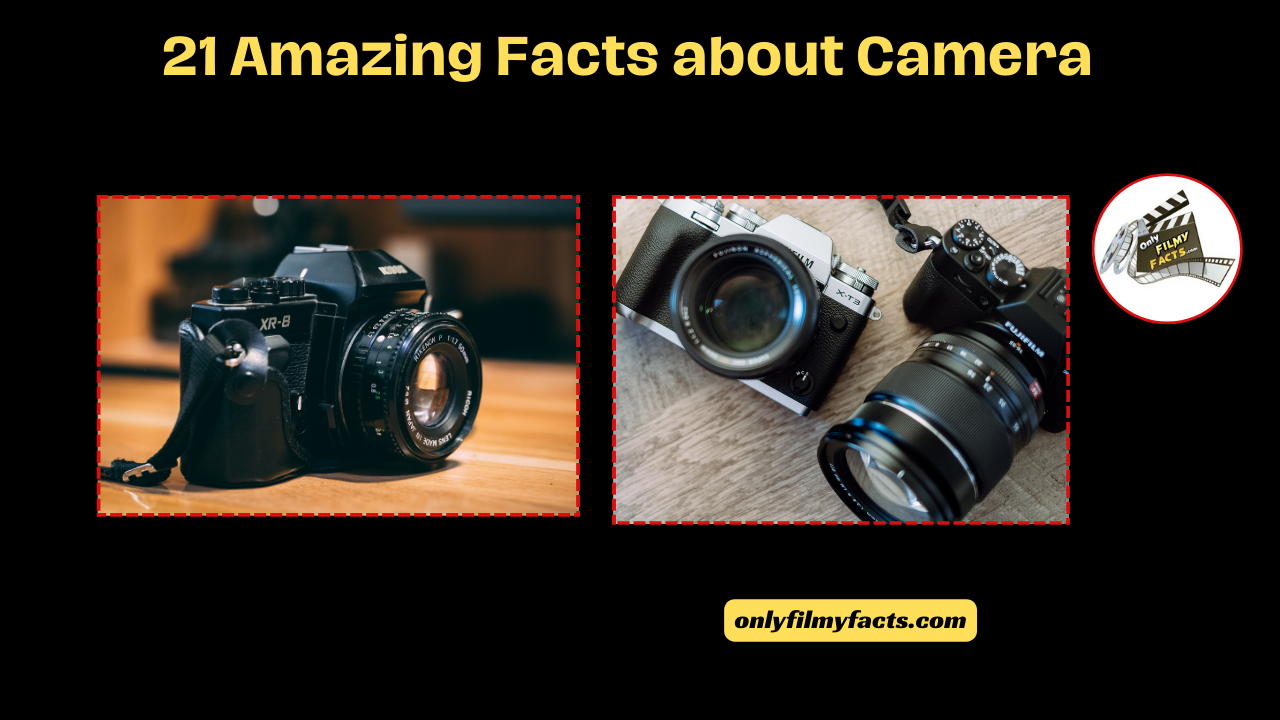The Latin term “Camera obscura,” which translates to “Dark chamber,” is where the word “Camera” comes from.
A pinhole cam, which dates to the fourth or fifth century, was the first camera ever mentioned in history.
The Mammoth, the largest camer in the world, was constructed in 1899. It required 15 men to operate and weighed 1,400 pounds. People initially believed the pictures were fake because they were so sharp.
Samuel Shlafrock was the inventor of the first instant camer’. It included a camera and a portable wet darkroom in one unit.
Edwin Land created the “Polaroid cam.” He immediately took his daughter, who was three years old at the time, away when she asked him why she couldn’t see a picture.
The First Digital camer’ was developed by Kodak in 1975 but then Dropped due to Fears that it would threaten their Photographic film business.
The original purpose of the webcam was to save people from making unnecessary trips to the University of Cambridge coffee room.
Digital camer’a and DSLR’s have a 30-minute Recording limit to Avoid the EU tax on high-end video Cam’s.
Kodak’s First digital camer’ was made in the mid-70s. It Recorded the images to a Cassette tape and took 23 seconds to Save the file.
A black-and-white camer’a is used by the Hubble telescope. In order to capture colour images, scientists first place a blue filter in front of the lens, then take another image using a red and then a green filter. After that, they merge the three pictures to produce a full-color image.
Fighter pilots of the F-35B are able to see through the aircraft thanks to a helmet that has six cameras around the aircraft’s body. It also costs approximately $400,000.
The Most Expensive camer’a, cost $2.8 million was sold at an Auction in Vienna. It was a Leica 0-Series camer’, a 1923 prototype for the Groundbreaking Leica A.
Canon produces an extremely rare camer’a lens with a focal length of 1200mm and a price tag of about $90,000..
The Camer’a, created by a team at MIT, has a frame rate of 1 trillion per second, which is sufficient to see light moving slowly.
In 1998, Sony had to modify all Camer’as sold with a ‘NightShot’ feature due to a Bug that allowed the Camera to see under People’s Clothing.
There was the Camer’a known as Rapatronic camera invented in the 1940’s that could take Pictures of Nuclear bombs milliseconds after Detonation.
The Gameboy Camera was the smallest digital camera in the world when it was first released, earning a spot in the 1999 Guinness Book of Records.
In certain cities, police officers had to wear cameras to record their conversations with civilians. Public complaints against officers decreased by 88% in these areas.
Security personnel are permitted in dressing rooms in the majority of US states, with some operating behind two-way mirrors.
The shutter sound on Japanese phones cannot be muted.
Mumbai-based photojournalist Dilish Parekh is the owner of the largest camer’a collection. 4,425 antique cameras are in his possession.
Here are some facts about cameras:
- The word “camera” comes from LatinThe word “camera” comes from the Latin phrase camer’a obscura, which means “dark chamber”. The earliest experiments with capturing images were done in darkened rooms.
- The first photograph was taken in 1826Joseph Nicéphore Niépce took the first permanent photograph of a camera image in 1826. He used a sliding wooden box camer’ made by Charles and Vincent Chevalier in Paris.
- The first digital cam was invented in 1975Steve Sasson invented the first digital camera in 1975. It weighed 8 pounds and could record black and white photos at 0.01 megapixels.
- The first DSLR cam was released in 1986Kodak and Canon released the first DSLR camera in 1986. It used a 1.3 megapixel image sensor and a Canon F-1 film SLR body.
- The most viewed photograph is the Windows XP default wallpaperThe most viewed photograph in history is the default wallpaper for Windows XP. It was photographed in 1996 by Charles O’Rear.
- Chromatic aberrationChromatic aberration is when a lens can’t focus different wavelengths of light to the same spot. This causes color fringing around high contrast edges.
- The “cam does not lie” adageThe adage “the camer’a does not lie” is an accepted, but erroneous, cliché

